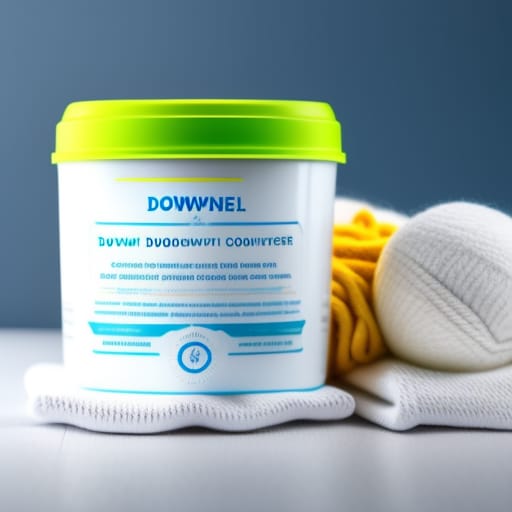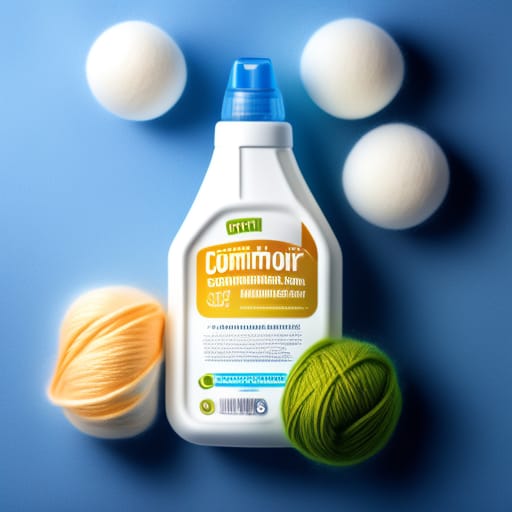A plush, fluffy down comforter is one of life’s luxuries. The warmth and comfort it provides, especially on a cold winter night, is unbeatable. As much as we may want to, unfortunately we can’t avoid getting our comforters dirty forever. Learning how to properly wash a down comforter at home is an essential skill for keeping your bedding fresh and extending its lifespan.
In this comprehensive guide for beginners, you’ll learn everything you need to know about washing down comforters at home. We’ll cover how to prep your comforter for cleaning, the best techniques and products to use, drying and maintenance tips, and common mistakes to avoid. With the right approach, you can keep your down comforter fluffy and beautiful for years to come. Let’s get started!
What Are Down Comforters and Why Wash Them?
Before we dive into the cleaning details, let’s quickly go over what exactly down comforters are and why it’s important to wash them periodically.
Down comforters are a type of bedding filled with the fine, fluffy clusters and plumules that insulate birds and keep them warm. This natural down filling is most commonly from ducks and geese.
The down is encased in a stitched duvet cover usually made from cotton, but sometimes silk. The baffled compartment design helps keep the down evenly distributed inside.
Compared to other bedding materials, down offers superior:
- Warmth – Down traps air extremely well to provide excellent insulation.
- Lightweight feel – Down is very lightweight for the warmth it provides.
- Softness – The delicate down clusters have a plush, pillowy feel.
- Durability – With proper care, down comforters can last for many years.
To keep your down comforter in top condition and maintain these desirable qualities, washing it occasionally is a must. Dirt, body oils, and other contaminants can degrade the down fill over time. Every 6 months or year is a good rule of thumb for how often to wash a down comforter. More frequent washing may be needed if you live in a hot, humid climate or have allergies.
Washing at home allows you to save money compared to expensive dry cleaning. With the right techniques, you can get your comforter fresh and fluffy again. This guide will walk through all the steps for washing success.
Supplies You’ll Need for Washing a Down Comforter
Before starting the washing process, make sure you have the proper supplies on hand:
• A Front Loading Washing Machine
Top loaders can be too harsh. Front load washers are gentler on the delicate down.
• A Mild Liquid Detergent
Look for a delicate wash detergent or one specifically made for down.
• White Distilled Vinegar
Helpful for removing odors and brightening.
• Down Comforter Detergent Alternative
Specialized down wash like Nikwax improves cleaning.
• Extra Large Capacity Dryer
Match your washer capacity to handle a big comforter.
• 2-3 Tennis Balls
For adding loft while drying.
• Mesh Wash Bags
To protect zippers and keep down contained.
With the key supplies gathered, you’re ready to start prepping the comforter for a good, thorough home washing.
Step-By-Step Guide to Washing a Down Comforter at Home
Follow these steps to properly wash and care for your down comforter using a top loading washing machine:
1. Check the Comforter Care Label
The first step is to check the sewn-in manufacturer’s care label on your comforter. This will indicate if the comforter is machine washable and what temperature water can be used.
If there’s no care label for some reason or the comforter is marked dry clean only, stop here – you’ll need to take it to a professional.
2. Pre-treat Any Stained Areas
Check over the comforter for any visible stains or heavily soiled areas. Pre-treat these spots with a stain remover or mix of detergent and water. This will help lift dirt and grime during washing.
3. Shake Out the Comforter
Take the comforter outside or to an open area and give it a few good hard shakes. This will loosen and redistribute the down fill even before washing.
4. Zip Up the Comforter in a Mesh Bag
Place the comforter inside a large mesh wash bag and zip it closed. This will keep the down contained. Make sure to zip up any comforter openings too.
5. Set the Machine to a Gentle Cycle
Set your front loading washing machine to use a gentle or delicate cycle with cool to warm water, per the care instructions. The gentler the wash, the better.
6. Add a Mild Detergent
Use only 1-2 tablespoons of a delicate wash detergent or down-specific detergent alternative. Too much detergent can damage the down’s natural oils.
7. Let the Machine Run Through the Cycle
Start the wash cycle and let the machine run until fully completed. Don’t overload the machine – give the down comforter enough room to move around freely.
8. Rinse Again if Needed
For heavily soiled comforters, you may need to run an additional rinse cycle to make sure all residual detergent gets removed.
9. Transfer to Dryer Immediately
As soon as the wash finishes, transfer the comforter directly from the washer to the dryer. Don’t let it sit wet for long.
10. Dry on a Low Setting with Tennis Balls
Dry the comforter alone on low heat. Toss a few tennis balls in the dryer – they will bounce around and redistribute the down for maximum fluffiness.
11. Repeat Drying Cycle if Needed
Depending on the size of your dryer, you may need to stop the dryer partway through and reset it for another cycle until completely dry.
12. Remove Promptly and Fluff
Take out the comforter immediately when drying is done. Give it a good hard shake and fluff again.
And that covers the complete washing process from start to finish! The key things to remember are using a gentle cycle, mild detergent, tennis balls for drying, and promptly transferring between washer and dryer.
Now let’s look at some extra tips and considerations…
Hand Washing a Down Comforter
While machine washing is preferred for its thorough cleaning, some people may wish to hand wash their down comforter instead if:
- The comforter is too large for any available washing machine
- The fabric is delicate, vintage, or antique
- You want to be extra gentle during cleaning
Here’s how to hand wash a down comforter:
Supplies: Mild detergent, bathtub, timer, laundry bags, towels
Steps:
- Fill the tub with lukewarm water. Add a small amount of detergent.
- Place the comforter in a mesh laundry bag and lower into water.
- Let soak for 15-20 minutes, gently pressing and swirling the bag around.
- Drain the dirty water and refill the tub with clean water.
- Rinse the comforter by soaking for 10-15 minutes more. Drain.
- Press water out gently. Do not wring, twist, or scrub the down.
- Transfer to dryer or hang to drip dry. Fluff frequently while drying.
Hand washing allows you to be extremely gentle during the cleaning process. Just be prepared for it to be time-consuming and labor-intensive compared to machine washing.
Drying Techniques for Down Comforters
Proper drying is just as important as washing to revive a down comforter. Here are some drying guidelines:
- Use low heat to prevent damage to fabric and down fill. High heat can scorch the comforter.
- Add 2-3 tennis balls to break up clumps and fluff.
- For a king size comforter, you may need 2 dryer cycles to completely dry.
- Remove immediately once drying is finished. Avoid sitting in the dryer hot.
- Do not over dry. This can strip natural oils from down.
- Can also air dry on a clothesline or drying rack outside. Fluff often.
The drying process will restore the down comforter’s fluffy loft and softness. Just be sure to use care when handling to avoid compressing areas before it’s fully dried.
Cleaning Products to Use or Avoid
Having the right laundry products for washing a down comforter is important. Here are some do’s and don’ts:
Recommended
- Down-specific detergents like Nikwax Down Wash Direct
- Ultra-mild detergents for delicates
- White distilled vinegar (1/2 cup per wash)
- Essential oil-based products like Eucalan or Soak Wash
Avoid
- Standard laundry detergents with brighteners or bleach
- Fabric softeners and dryer sheets
- Oxygen or color-safe bleach
- Borax or washing soda
- Vinegar and bleach together
Stick to products designed for delicates and down fill whenever possible. Harsher chemicals can strip the feather’s natural oils over time.
Step-By-Step Drying: Machine and Air Drying Methods
To dry a down comforter after washing, you have two options:
Machine Drying
- Transfer comforter directly to the dryer after washing.
- Use a low heat setting (delicate or air dry if available).
- Toss 2-3 tennis balls into the dryer drum.
- Run through full drying cycle. Repeat if needed.
- Remove immediately once dry; shake and fluff.
Air Drying
- Gently squeeze out excess water after washing.
- Hang comforter over two clothes lines or a large drying rack.
- Use clothespins on inner edges only to avoid creasing the fill.
- Reshape and fluff the comforter every couple hours.
- Allow to fully dry in a well-ventilated area.
- Bring inside and fluff once completely dry.
Whichever method you use, take time while drying to break up clumps and redistribute the down for maximum loft.

Drying Times and What to Expect
Drying a heavy down comforter fully can take some time. Here are some general timeframes to expect:
- Machine drying on low: 2-4 hours
- Air drying indoors: 12-24 hours
- Air drying outdoors: 4-8 hours (depending on sunlight and humidity)
- King size comforters may need even more time
Monitor drying progress and repeatedly fluff and reshape as needed until the comforter regains its full loft and feels completely dry. The innermost areas will take the longest to dry fully. You want to avoid taking it out while still damp.
Storing a Down Comforter Between Uses
Proper storage between washes helps extend your comforter’s lifespan. Follow these storage tips:
- Store flat in a large breathable bag. Do not fold sharply or compress.
- Avoid plastic bags or fully airtight containers. Allow airflow.
- Keep in a closet or under the bed at normal room temperature.
- Wash linens and mattress covers regularly to avoid dust and odors.
- Alternate between two comforters for longer life.
- Fluff and reshape before placing back on the bed.
- Consider adding cedar blocks to storage bag to deter insects.
- Bring to a professional for cleansing every 2-3 years.
With some care when storing, your comforter will come out feeling fresh and ready to enjoy each night’s sleep.
Signs It’s Time to Wash Your Down Comforter
You don’t need overly frequent washing to keep a down comforter clean. But about once or twice a year, look for these signs it’s due for a wash:
- Newly purchased comforter for first-time prep
- Visible stains or soiled spots on the outer fabric
- An “old” or musty odor
- No longer feeling fluffy and soft
- After illnesses to remove germs
- If stored for a long period of time
- If purchased used without prior washing
- Persistent allergies or sleep discomfort
- Following renovation or home repairs
Use your best judgment based on how soiled your comforter seems or how long since the last wash. When in doubt, washing is safer to restore freshness.
Common Laundering Mistakes to Avoid
While washing your down comforter at home is perfectly doable, there are a few mistakes that could damage the fill or fabric:
- Overloading the washing machine
- Using hot water, harsh detergent, or bleach
- Over-drying or drying on high heat
- Letting it sit wet for a long time after washing
- Compressing or tightly folding when wet
- Forgetting to use tennis balls while drying
- Leaving it balled up out of the packaging
- Washing too frequently and wearing out fabrics
With care and the proper techniques, you can keep your down comforter fluffy and clean without issues. Just take your time and be gentle.
DIY Dry Cleaning Kits for Down
While most down comforters can be home washed, dry cleaning is another option in some cases:
- If the comforter is labeled “dry clean only”
- For antique or delicate fabrics
- If you don’t have access to a large enough washer
- If you prefer less hands-on cleaning
Rather than taking it to a professional cleaner, you can find home dry cleaning kits for down and delicates. Two options are:
Steam Cleaning Kits
Steam cleaners use the power of dry vapor steam to sanitize and refresh. simpli-magic is one popular brand.
Wet Cleaning Solutions
Wet cleaners like Dryer use a gentle detergent and soft bristle brush agitator for scrubbing.
When used properly per the instructions, these can safely clean down at home between professional dry cleanings.
Cleaning a Down Comforter Without Washing
If your down comforter doesn’t need a full wash just yet, you can freshen it up between cleanings using these simple techniques:
- Spot clean stained or dirty areas only
- Air out in sunlight for 2-3 hours
- Use a deodorizing spray like Febreze
- Brush and fluff vigorously with a soft bristle brush
- Steam clean using a handheld garment steamer
- Freeze overnight to kill dust mites
- Add dryer sheets while air drying for extra freshness
Spot clean stains right away to avoid the need for frequent full washing. Overall, airing it out does wonders for reviving a down comforter between washes.
Perks of Professional Dry Cleaning Services
While home washing works great, professional dry cleaning services provide some advantages:
- Large machines wash very large/heavy comforters
- Disinfects and kills dust mites and allergens
- May offer advanced cleaning solutions
- No work or equipment needed on your part
- Professionals inspect for needed repairs
- Convenient pickup and delivery options
- Experts at properly drying down
Consider taking your comforter for professional cleaning every 2-3 years as part of your care routine. This supplements occasional home washing.
Is Dry Cleaning or Washing Better for Down?
Dry Cleaning
✔ Works well for delicate fabrics
✔ No shrinkage risk from water
✔ Thorough disinfecting
❌ Harsher chemicals
❌ Costly service fees
❌ Must drop off and pick up
Home Machine Washing
✔ Convenient at home
✔ Customize wash settings
✔ Free drying outside
✔ Freshens fill best
❌ Large capacity required
❌ Can’t treat heavy soiling
Verdict: Home washing gives the best clean for heavily used comforters. Dry cleaning works well for maintenance cleaning of delicates every few years. Combine the two for ideal care!
Special Considerations for Goose Down
Goose down comforters are even more luxurious and warmer than duck down. But the ultra-fine, high-loft fill requires a bit more care.
When washing goose down:
- Use cooler water temperatures
- Additional rinse cycle to remove detergent
- Lowest heat setting while drying
- Remove promptly from dryer before over-drying
- Store loosely to prevent compression
With extra gentle care, a high-quality goose down comforter can last decades. The investment upfront is well worth it!

Tips for Washing Delicate Antique Down Comforters
For vintage or antique down comforters:
- Check for weak seams and holes before washing
- Cover with a mesh bag for washing and air drying
- Wash by hand in a bathtub if possible
Frequently Asked Questions
What is the best way to dry a down comforter?
Use the lowest heat setting on your dryer and add a couple tennis balls to fluff and redistribute the down filling. You can also air dry outside if the weather permits. Just make sure to fluff and reshape the comforter frequently while drying.
How often should you wash a down comforter?
Most experts recommend washing a down comforter once or twice a year. Wash more frequently if you sweat a lot at night, live in a hot climate, or have allergies. Proper storage between washes helps keep it cleaner too.
Can you put a down comforter in the washing machine?
Yes, you can machine wash down comforters at home as long as you use a front loading washer on the gentle cycle with mild detergent. Just be sure to get one specially designed for large loads.
What do you put in the dryer with a down comforter to keep it fluffy?
Tennis balls are the classic item to put in the dryer. As they bounce around, the balls gently beat the comforter to break up clumps and loft the down filling. Two or three balls is plenty.
How do you dry clean a down comforter at home?
Look for at-home dry cleaning kits that use steam or gentle wet cleaning solutions. Simply follow the product instructions to refresh your comforter in between full machine washes. Handheld garment steamers also work well for touch-ups and odor removal.








